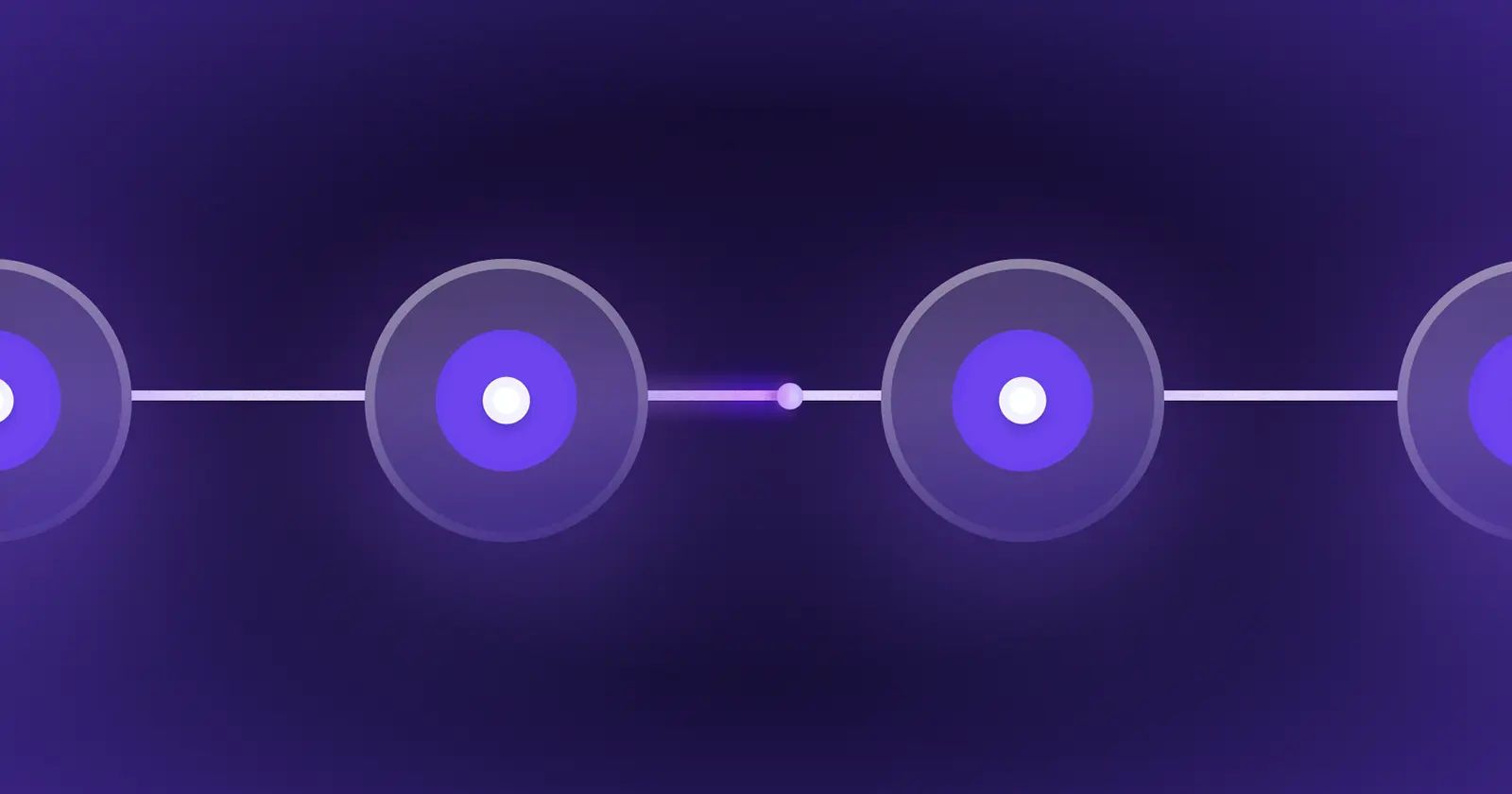AI is moving fast, and HR is feeling the pressure to adopt AI to boost productivity, improve efficiency, and stay competitive. But with so much change happening so quickly, it’s easy to hesitate. What if we make the wrong call? What if we introduce AI too soon or too broadly, and it backfires?
Introducing the No Regrets Playbook: A simple, actionable framework to help you confidently bring AI into your organization — making decisions today that you’ll be proud of tomorrow.
Because here’s the thing: Hope is not a strategy, and hesitation could be costly. As HR leaders, you have a once-in-a-generation opportunity to shape how AI integrates into our organizations. This isn’t just about simply automating tasks or cutting costs, it’s about enabling people to do their best work. It’s about making work more human and investing in a people-powered future — starting today.
Here’s how you can bet big on your people with AI — and have no regrets in the process.
1. Lead the shift. Start by starting.
Every journey begins with a single step. The best way to get AI right is to do the brave thing and start somewhere.
Don’t wait for perfection. Many HR leaders are, understandably, in a state of decision paralysis and worried about making the wrong call. And it’s easy to see why: Your people are worth the caution and attention to detail.
But in reality, inaction is the bigger risk. AI adoption doesn’t have to be an all-or-nothing endeavor. You can start small and scale deliberately. For starters, consider how you can better use AI in your own day-to-day work.
💡 Where to start:
- Use AI to automate time-consuming tasks like summarizing employee survey insights or generating performance review drafts.
- Apply AI to streamline repetitive HR workflows (e.g., scheduling interviews or writing job descriptions).
- Lean into AI-powered skills and career recommendations to make talent development more dynamic.
The point is to get moving. Experiment. Learn. Iterate. The sooner you start, the faster you’ll build the muscle memory your organization needs.
✅ No regrets tip:
Lead from the front. Showcase how you personally use AI in your work and inspire your team to tinker with their own use cases.
Like any objective, AI requires intentional planning, ownership, and accountability to truly drive value.
2. Set clear goals and owners.
Implementing AI without clear goals is just noise and wishful thinking. To avoid confusion, define specific goals, parameters, and accountability measures upfront — just like you would for your other business goals. Like any objective, AI requires intentional planning, ownership, and accountability to truly drive value.
💡 Where to start:
- Clarify your purpose. What are you hoping to achieve with AI? Whether it’s saving time, improving accuracy, or enhancing decision-making, be crystal clear about your desired outcomes. The more specific you can be, the more aligned your team will be.
- Assign ownership. AI isn’t a one-and-done solution. Designate specific individuals or teams who will be responsible for overseeing its implementation and ongoing success. This ensures that AI initiatives are continuously monitored, refined, and optimized.
- Set quantitative goals. Establish measurable metrics to track progress. For instance, if you’re using AI to assist with performance review summaries, set clear goals like reducing the time spent on reviews or improving employee satisfaction. Regularly track these outcomes to assess effectiveness and adjust strategies as needed.
✅ No regrets tip:
Treat AI initiatives like any other business goal: Identify clear objectives, owners, and results. Consider using our free goal progress tracker template as a starting point.
3. Trust is your most valuable currency.
We get it: AI usage, especially when it comes to matters like feedback and performance reviews, is a touchy subject. And for good reason: Everyone deserves to work in an environment where their impact is judged fairly and without bias.
Without the right policies, governance, and communication, even the most effective AI implementation will face resistance. At Lattice, we prioritize human oversight of AI-generated insights. While our platform can summarize engagement survey feedback, managers still review and approve it before sharing it with employees. This ensures AI complements, not replaces, human judgment.
💡 Where to start:
- Survey your people. Find out where they’re at with respect to AI usage and comfort level. If you need a starting point, use Lattice’s very own AI-at-work survey. It’s the same survey our people team used internally.
- Don’t operate in the shadows. Be transparent and be clear about what AI will and won’t do. Will AI help managers draft feedback but not deliver it? Will it automate admin tasks but not influence promotions
- Set privacy and data safeguards from day one. Show employees how their data will be used and protected. Once you and your legal team craft an AI usage policy, share it widely. Consider holding AI office hours to field employee questions.
✅ No regrets tip:
Don’t let trust be an afterthought. Bake it into your AI rollout from the start.
{{rich-highlight-1}}
4. Update career pathways with AI in mind.
The skills your workforce needs today won’t be the skills they need tomorrow. But HR can’t singlehandedly predict what those skills will be.
Start by collaborating with L&D, recruiting, and department heads to identify which AI skills are emerging across functions. Then, go straight to the source: Engage employees through focus groups, surveys, or feedback sessions to learn how they’re already using AI — or where they feel they need support. This ensures your AI skill pathways reflect real-world needs rather than hypothetical ones. Examples by function include:
- Marketing: Using AI-powered tools for campaign analysis and content generation.
- Finance: Automating financial forecasting and risk assessments.
- HR: Leveraging AI for feedback, engagement survey analysis, and employee self-service.
💡 Where to start:
- Bring in cross-functional leaders. Partner with L&D, recruiting, and department heads to identify the AI skills that matter most across different functions.
- Refine job descriptions and update competencies and responsibilities to reflect emerging AI skills, based on employee feedback and business needs.
- Create clear learning pathways. Work with L&D to offer structured development programs that help employees build practical AI skills over time.
- Make AI part of everyone’s growth. If your company uses individual development plans (IDPs), encourage everyone (including leadership) to have at least one growth area tied to AI.
✅ No regrets tip:
Make career growth a shared responsibility. Partner with cross-functional leaders and employees to co-create AI-ready pathways that are realistic, relevant, and future-proof.
5. Measure people outcomes, not just savings.
It’s easy to focus on AI’s efficiency and cost savings — but the real value lies in its human impact. When measuring AI’s success, look beyond financial metrics and consider:
- Employee experience: Are people spending less time on admin work and more on meaningful projects?
- Skills growth: Are employees gaining confidence with AI tools and expanding their capabilities?
- Engagement and retention: Are managers feeling supported and employees less burned out?
AI’s greatest potential is in augmenting managers and empowering employees, not replacing them. According to Gartner, managers today are juggling 51% more responsibilities than they can effectively handle. AI can ease the burden — freeing them to focus on coaching, development, and connection.
💡 Where to start:
- Go beyond efficiency metrics. Track employee satisfaction, skills growth, and manager effectiveness alongside productivity gains.
- Collect qualitative feedback. Use surveys, one-on-ones, and exit interviews to measure how AI impacts the employee experience. Using Lattice’s engagement surveys and analytics can help you get a read on the impact of your AI strategy on sentiment.
- Spot unintended consequences. Monitor for signs of burnout or bias. If your current approach to AI speeds up processes but adds stress, it’s time to recalibrate.
✅ No regrets tip:
Don’t just measure efficiency, measure empowerment. The true ROI of AI is in more engaged, higher-performing people, not just a leaner bottom line.
{{rich-highlight-2}}
6. Normalize learning and make it fun.
AI adoption is a journey, and the best way to accelerate collective learning is by making it engaging, collaborative, and playful. Create dedicated spaces where employees can share both wins and lessons, and celebrate experimentation. When employees can safely share what worked (and what didn’t) they’re more likely to take creative risks and learn from each other’s successes. Example ways include:
- Gamify AI upskilling. Create leaderboards or badges for employees who experiment with AI tools and share their insights. Offer prizes or shoutouts to top contributors.
- Host AI hackathons or workshops. Encourage cross-functional teams to collaborate on creative AI solutions, then showcase the results.
- Share quick wins widely. Use Slack, newsletters, or all-hands meetings to highlight success stories — like how someone automated a tedious task or boosted productivity with AI.
At Lattice, we’ve seen teams create “AI sandbox” channels on Slack where employees can test new AI features, share results, and exchange best practices. This drives faster, smarter adoption across teams by turning AI exploration into a shared experience.
💡 Where to start:
- Create a public AI wins-and-lessons space. Set up a Slack or Teams channel dedicated to sharing AI experiments, discoveries, and tips.
- Make learning visual and social. Encourage employees to share screenshots, demos, or short videos showing how they’re using AI.
- Recognize and reward contributors. Recognize employees who help others learn AI faster — through internal awards or company-wide praise.
✅ No regrets tip:
The more you share, the faster your organization learns. Make AI learning a collaborative, celebrated experience — not a solo journey.
The most impactful changes often come from starting small and building on those early wins.
7. Don’t boil the ocean. Start simple.
It bears repeating: AI holds incredible potential to transform HR, but the key to success lies in taking incremental steps. With so many AI tools available, it’s tempting to try and overhaul everything at once.
The most impactful changes often come from starting small and building on those early wins. Tackling large, sweeping projects can lead to burnout and overwhelm, while focusing on bite-sized improvements allows for manageable risk and quicker results.
💡 Where to start:
- Engagement survey result analysis: Use AI to quickly analyze engagement survey responses, identifying key trends and insights that can inform future employee initiatives.
- Feedback writing assistance: Leverage AI to help managers draft more consistent and thoughtful feedback and performance reviews, saving time and ensuring fairness in evaluations.
- Agentic AI for employee questions: Leverage HR AI agents to answer basic employee questions about policies, benefits, and payroll, freeing up HR’s time for more strategic work.
These tactical, low-risk applications demonstrate AI’s immediate value, building confidence and credibility among your HR team. Once you’ve achieved quick wins, you can then scale up to larger AI-powered initiatives.
✅ No regrets tip:
Small, steady steps are often more impactful than massive, one-time changes. By building on small successes, you’ll lay the foundation for broader AI adoption down the road.
A Future Without Regrets
HR teams: AI isn’t on its way — it’s already here. This is your opportunity to guide how AI integrates into your organization and shapes the future of work.
By following this playbook, you’ll not only avoid the risks of rushed AI adoption, you’ll empower your people, unlock untapped potential, and create a future you’re proud of. At Lattice, we’re committed to helping you achieve just that.
Be bold. Invest in your people. And embrace a future without regrets.
{{rich-highlight-3}}
▶️ Replay: Best Practices for Building Trust
At Lattice’s AI+WORK Virtual Summit, industry leaders gathered to discuss the future of work. Hear how executives at ThredUp and Lanai build trust by managing risks, setting clear guidelines, and ensuring AI is used to benefit everyone.
▶️ Replay: Skilling Up for the Future
In this AI+WORK Virtual Summit session, leaders shared practical ways to upskill employees in AI and set them up for success in an evolving workplace.

💪 Everything you need to manage HR, talent, and AI.
Ready to see how Lattice AI can help you unlock your people’s full potential? Request a demo or read about our new AI agent.








